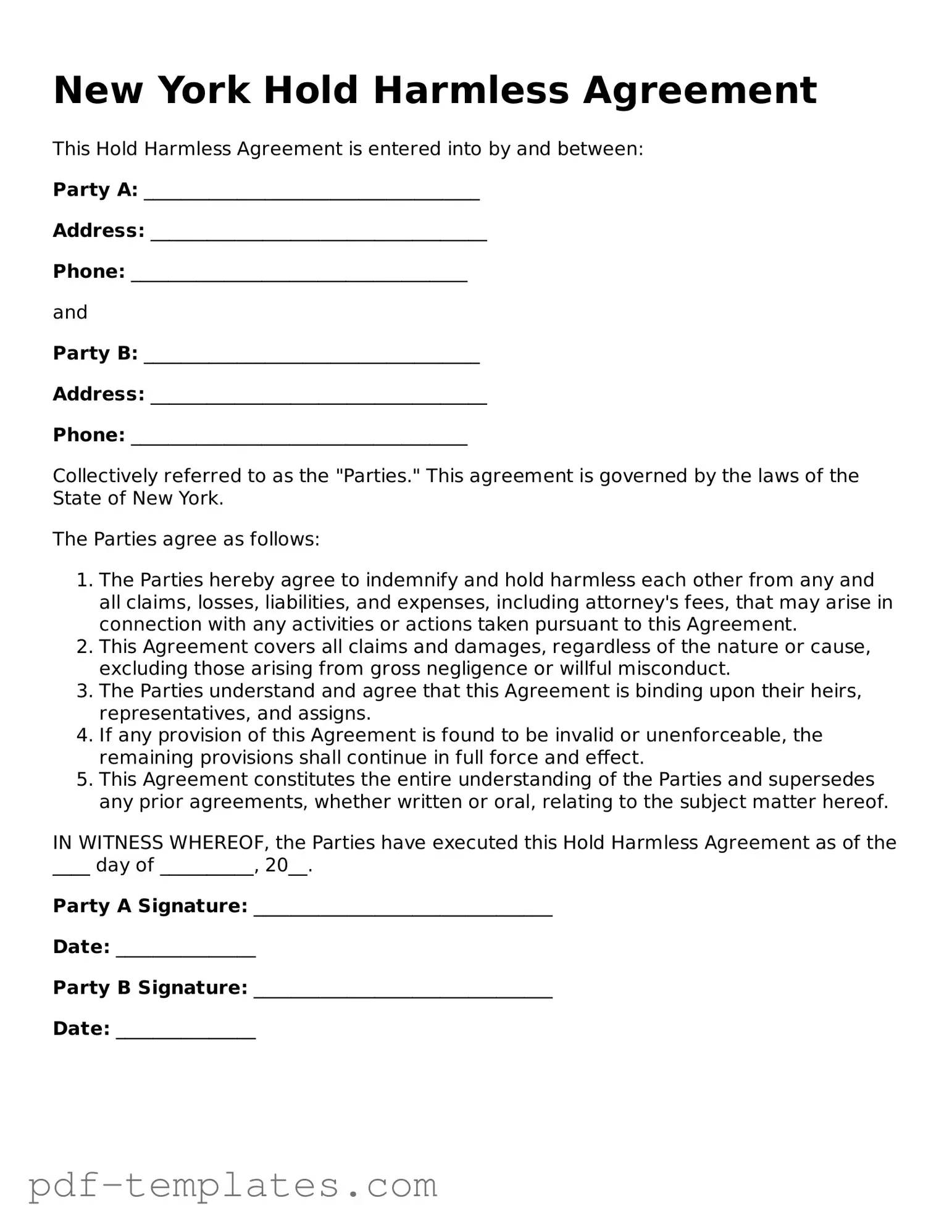The Waiver of Liability is a document often used in situations where one party seeks to protect themselves from legal claims resulting from injuries or damages that may occur during an event or activity. Like the Hold Harmless Agreement, it requires the participant to acknowledge the risks involved and agree not to hold the organizer responsible for any accidents. Both documents serve to limit liability, but the Waiver of Liability typically focuses more on personal injury, while the Hold Harmless Agreement can cover property damage as well.
The Indemnity Agreement is another similar document that establishes a mutual understanding between parties regarding responsibility for losses or damages. In an Indemnity Agreement, one party agrees to compensate the other for any claims or damages incurred. This is akin to the Hold Harmless Agreement, which also aims to protect one party from legal repercussions. However, the Indemnity Agreement may involve a broader scope of financial responsibility, including legal fees and costs associated with defending against claims.
The Release of Claims form is used to relinquish the right to pursue legal action against another party for specific incidents. This document, like the Hold Harmless Agreement, requires the signer to accept the risks and consequences associated with an activity. While both documents aim to protect the party being released from liability, the Release of Claims is often more focused on preventing lawsuits for past actions, whereas the Hold Harmless Agreement is generally proactive, covering future incidents.
The Service Agreement can also be compared to the Hold Harmless Agreement, especially in contexts where services are provided that may involve risk. This document outlines the terms of service, including responsibilities and liabilities. A Hold Harmless Agreement may be included as a clause within a Service Agreement to further protect the service provider from any claims arising from the service provided. Both documents emphasize the importance of understanding risks and responsibilities in contractual relationships.
Finally, the Rental Agreement often contains provisions similar to those found in a Hold Harmless Agreement. When renting property, landlords may include clauses that limit their liability for injuries or damages occurring on the premises. This is similar to the Hold Harmless Agreement, which aims to protect one party from legal claims. Both documents serve to clarify responsibilities and protect against potential legal issues that may arise during the rental period.
